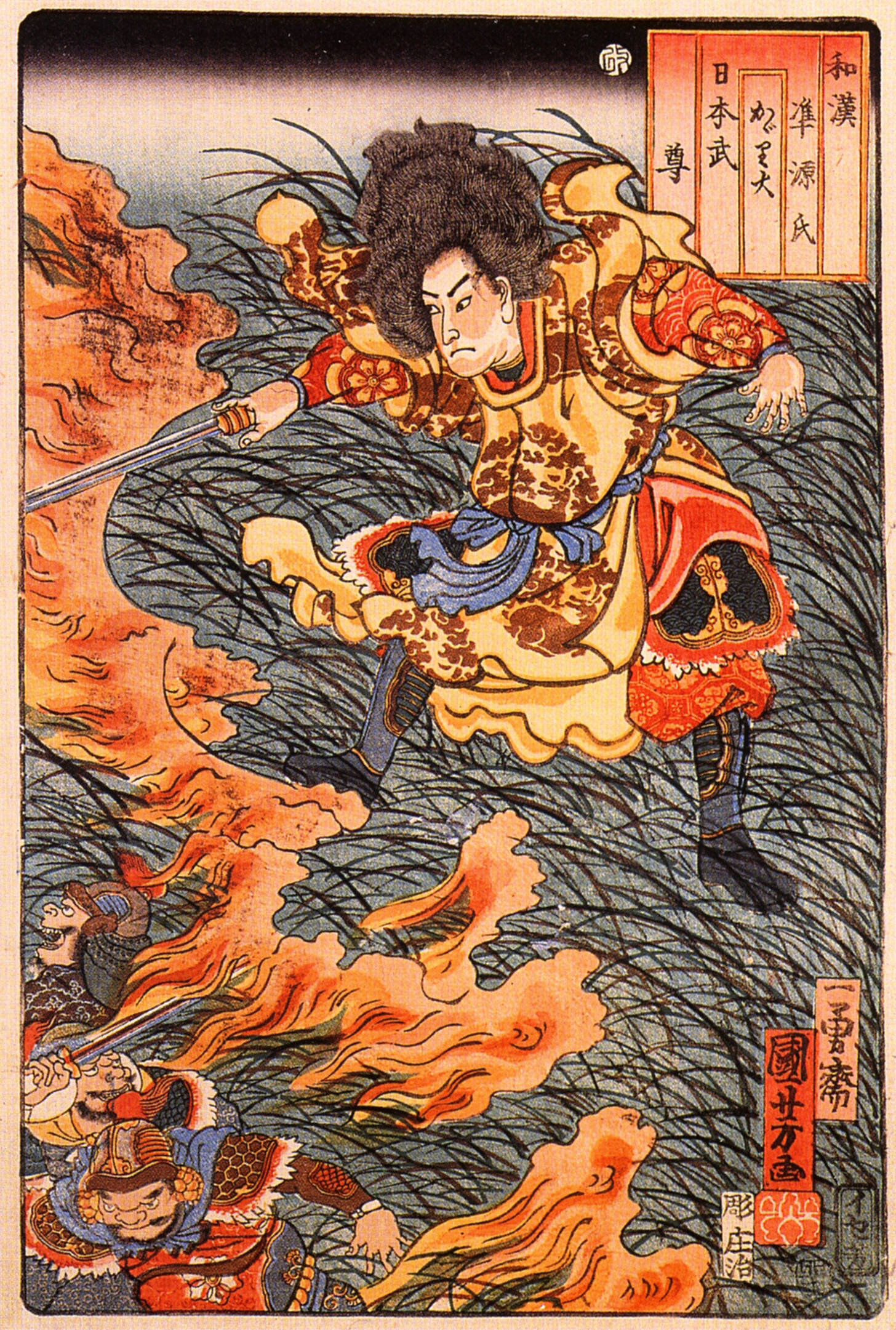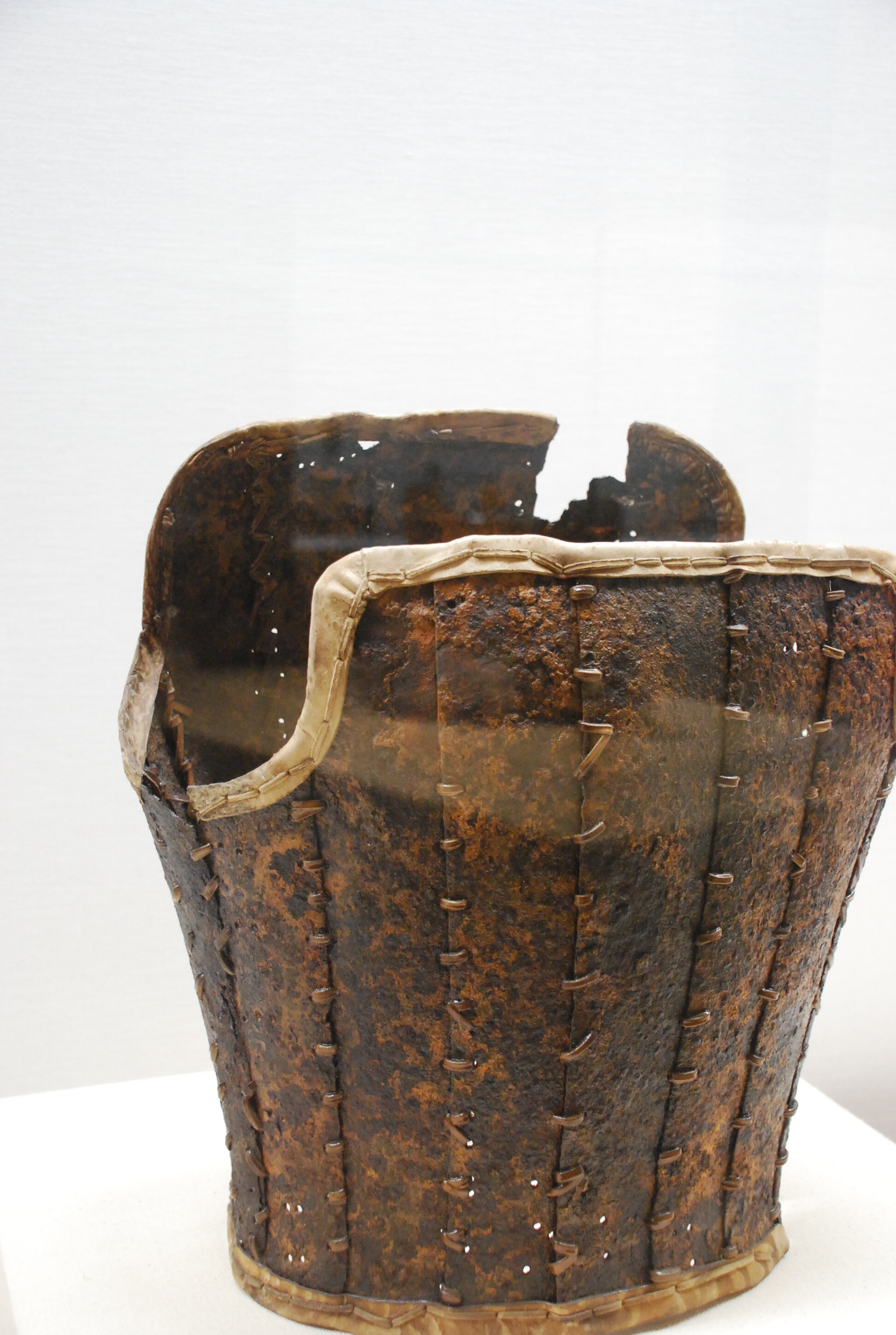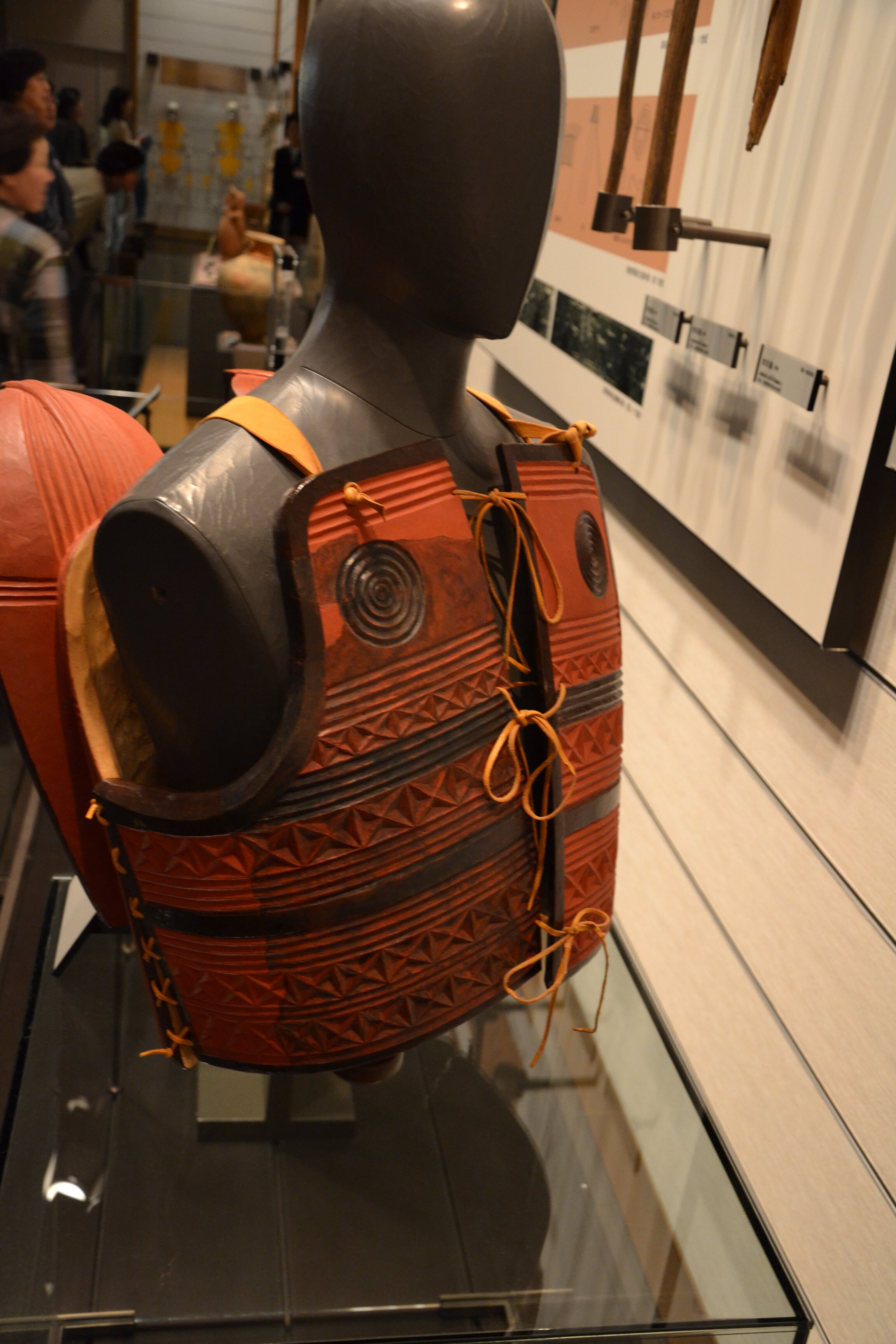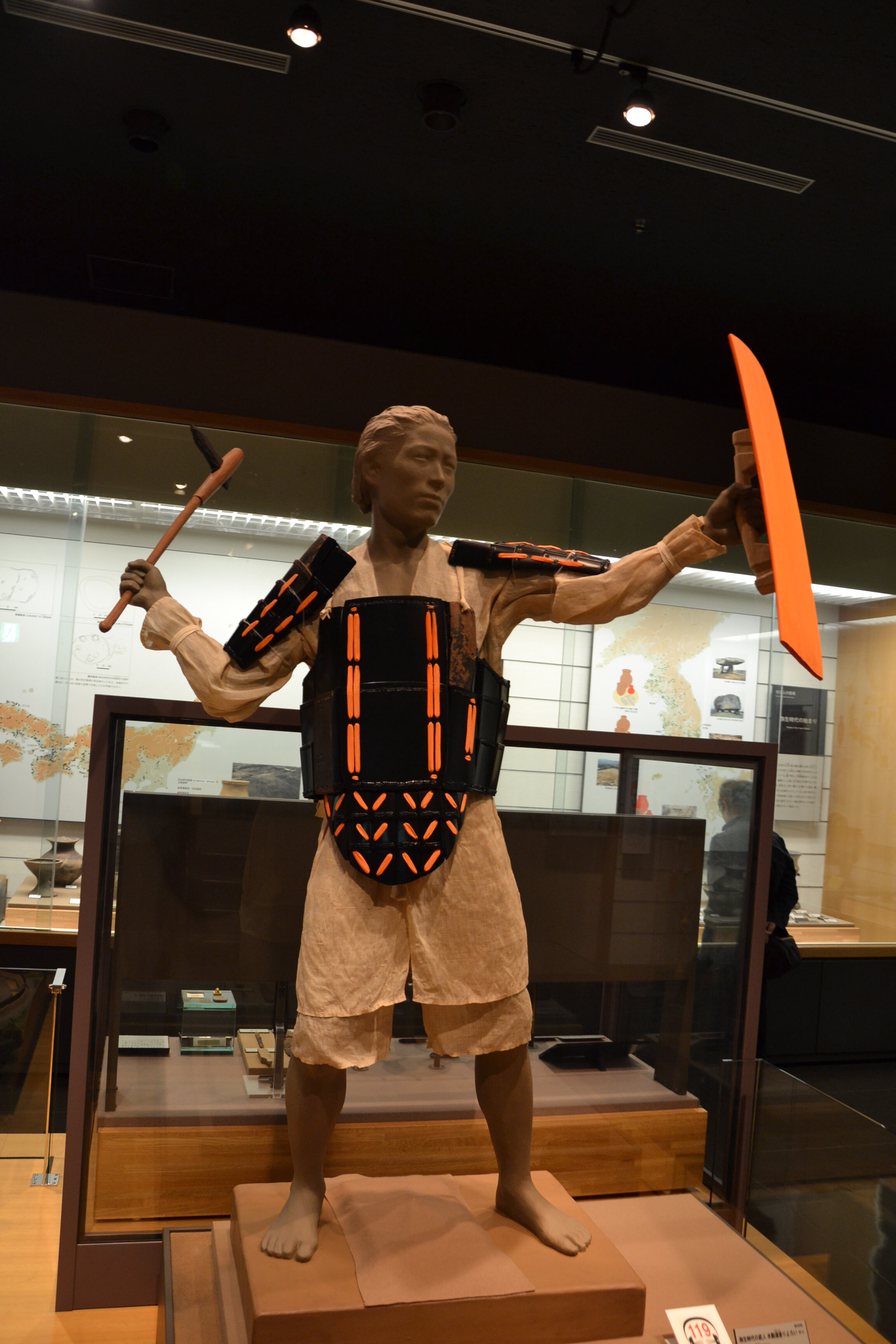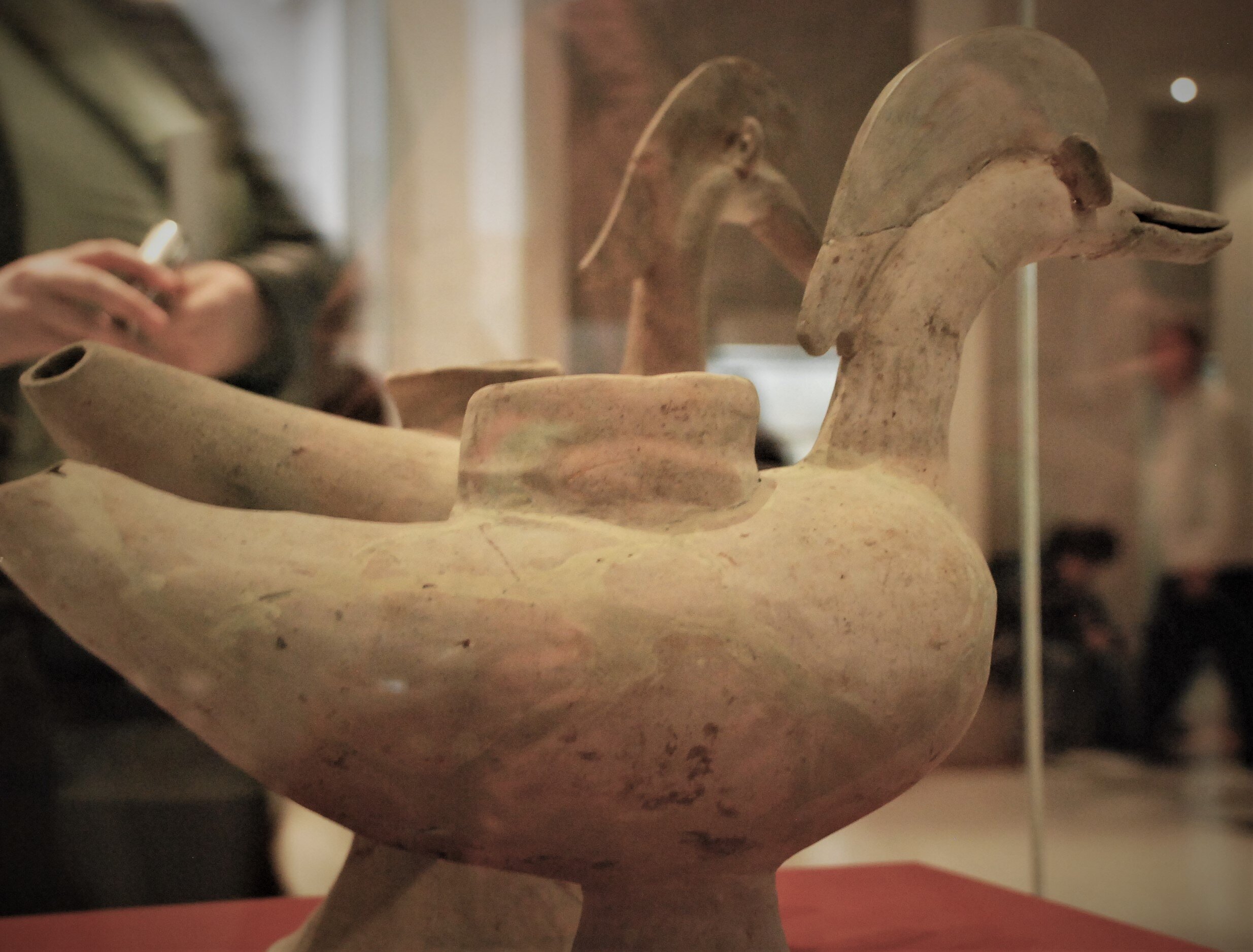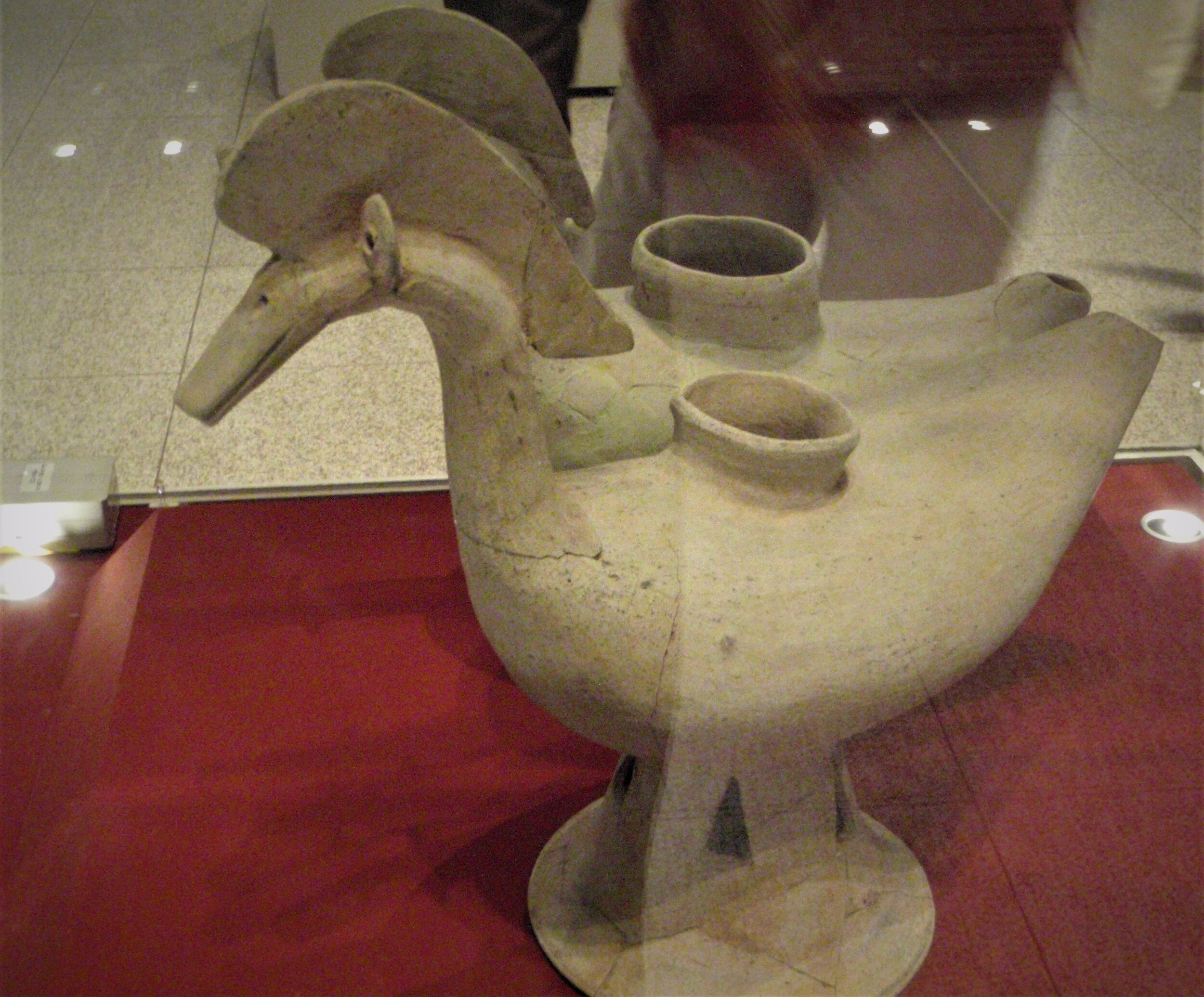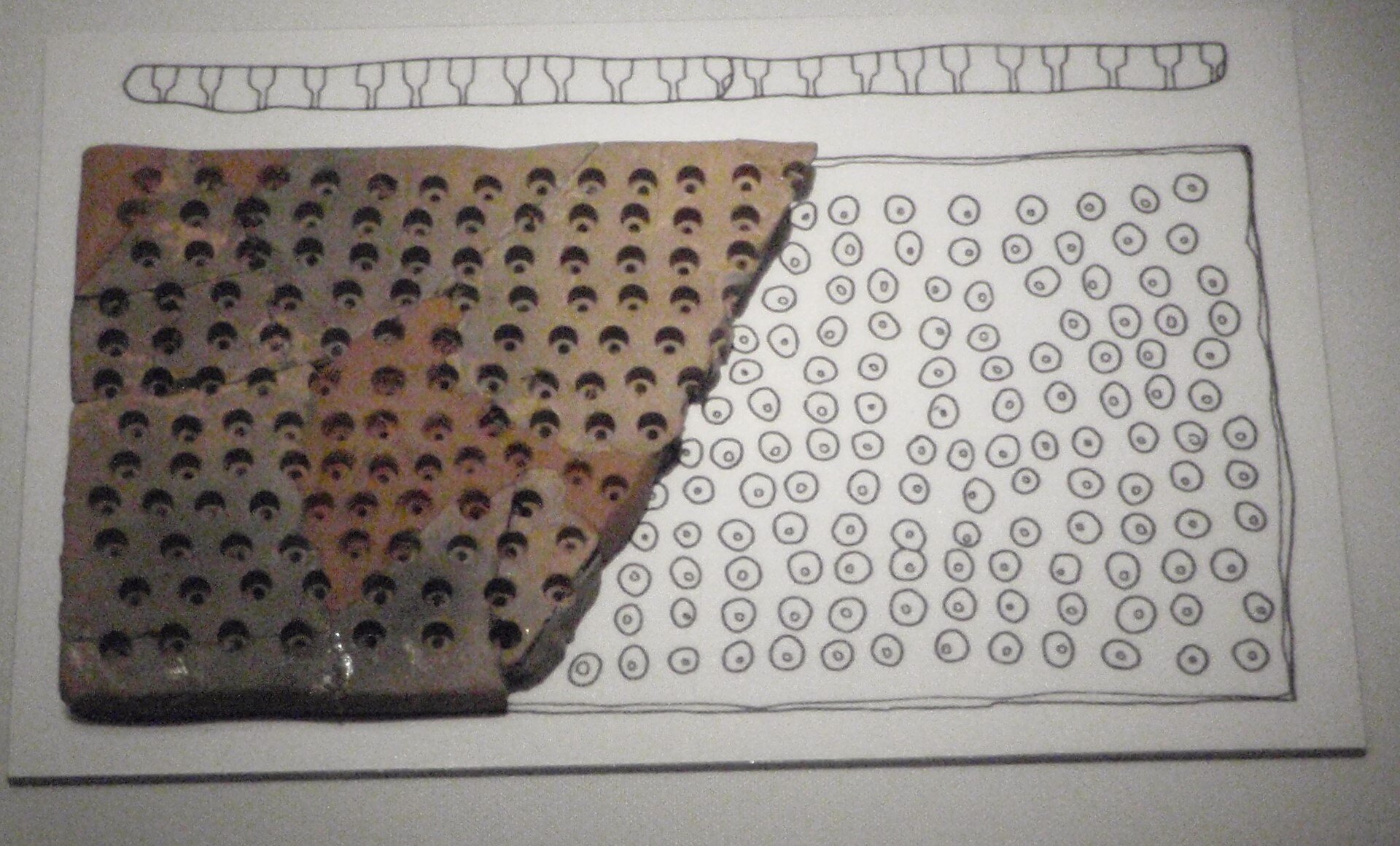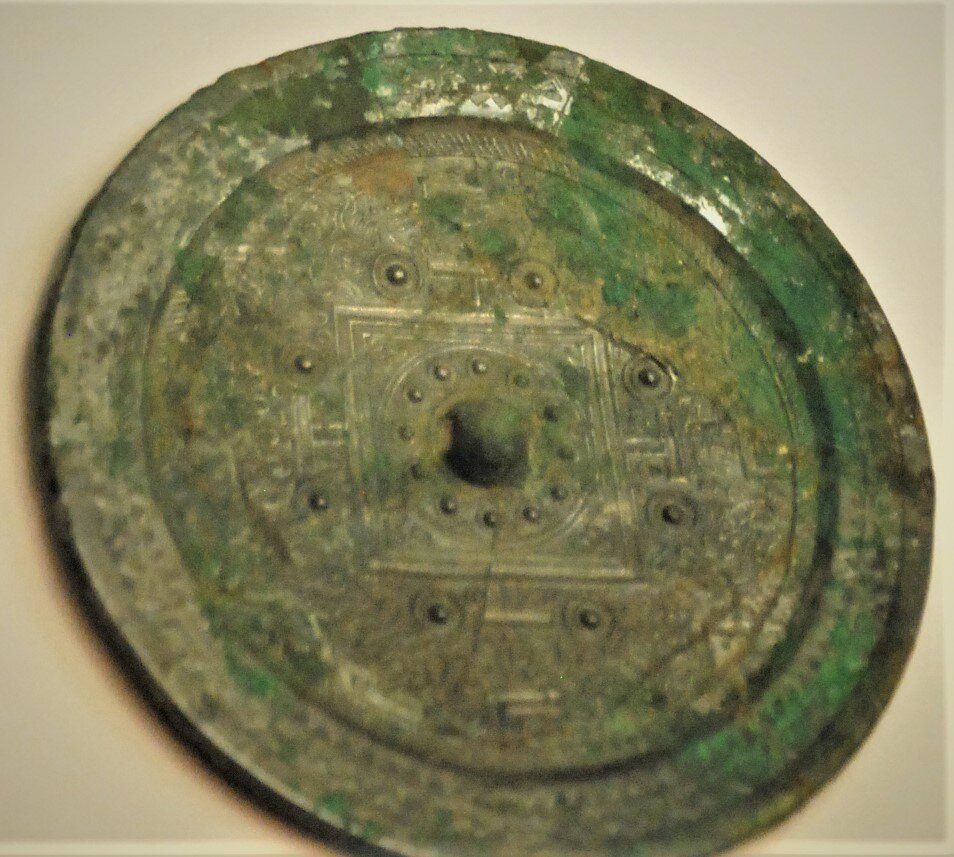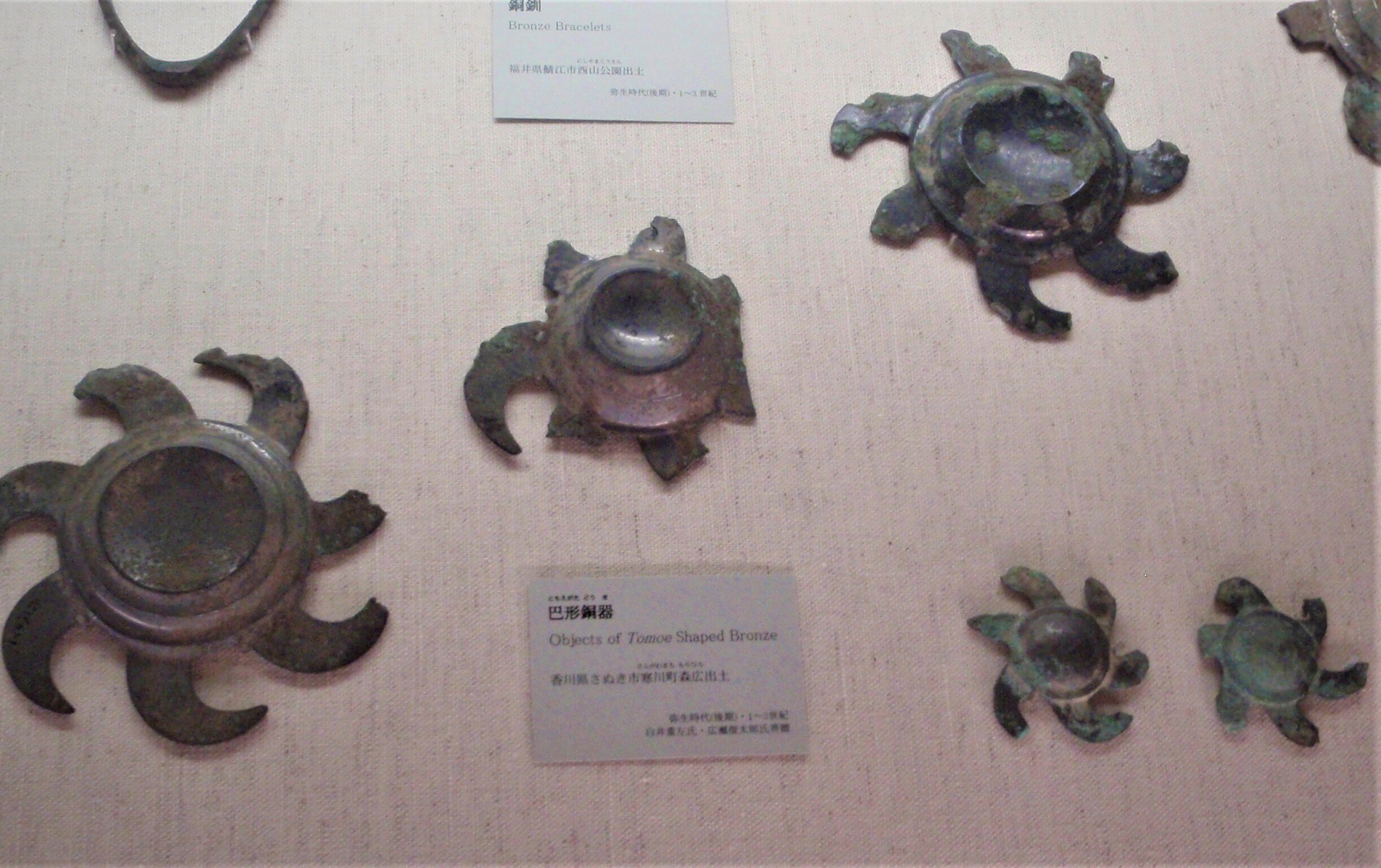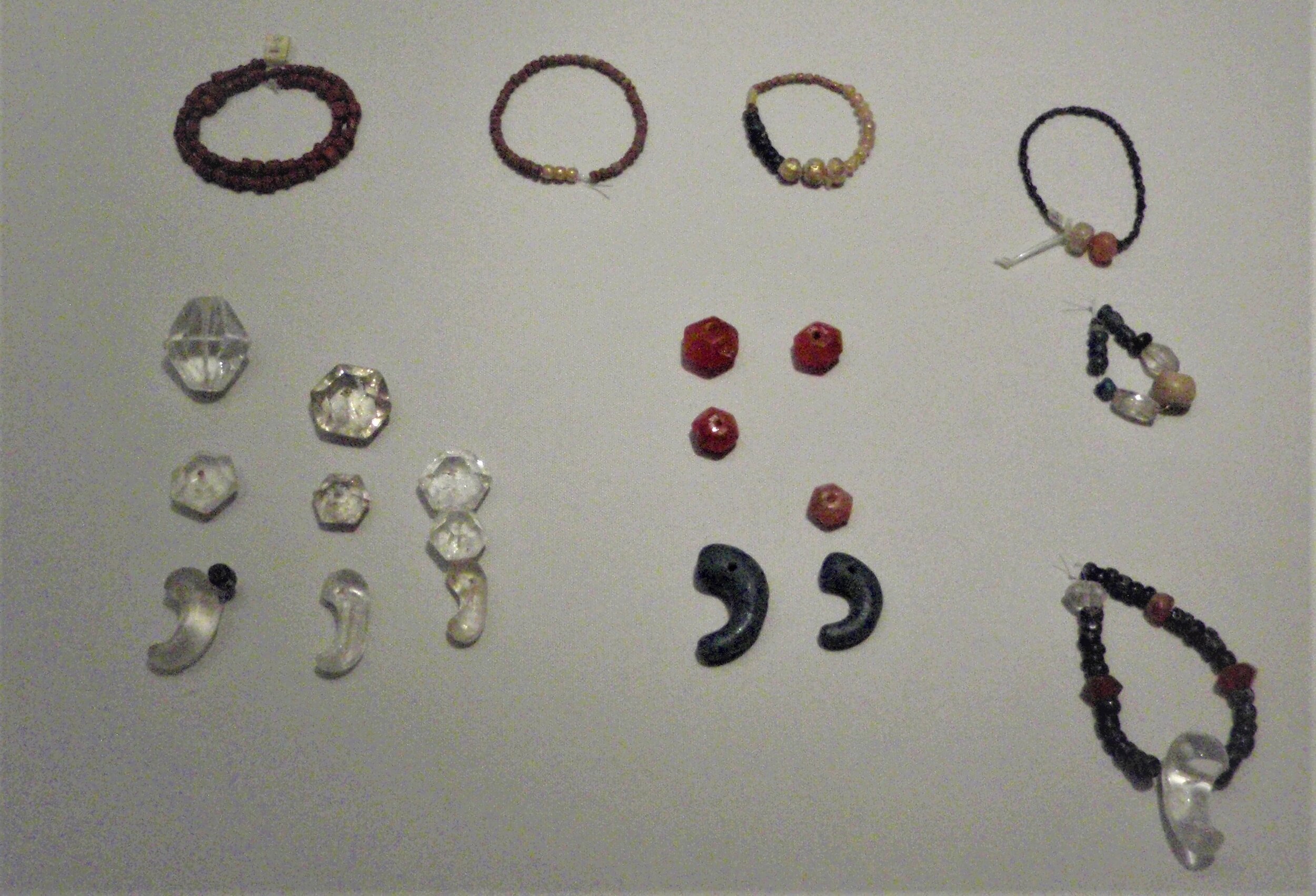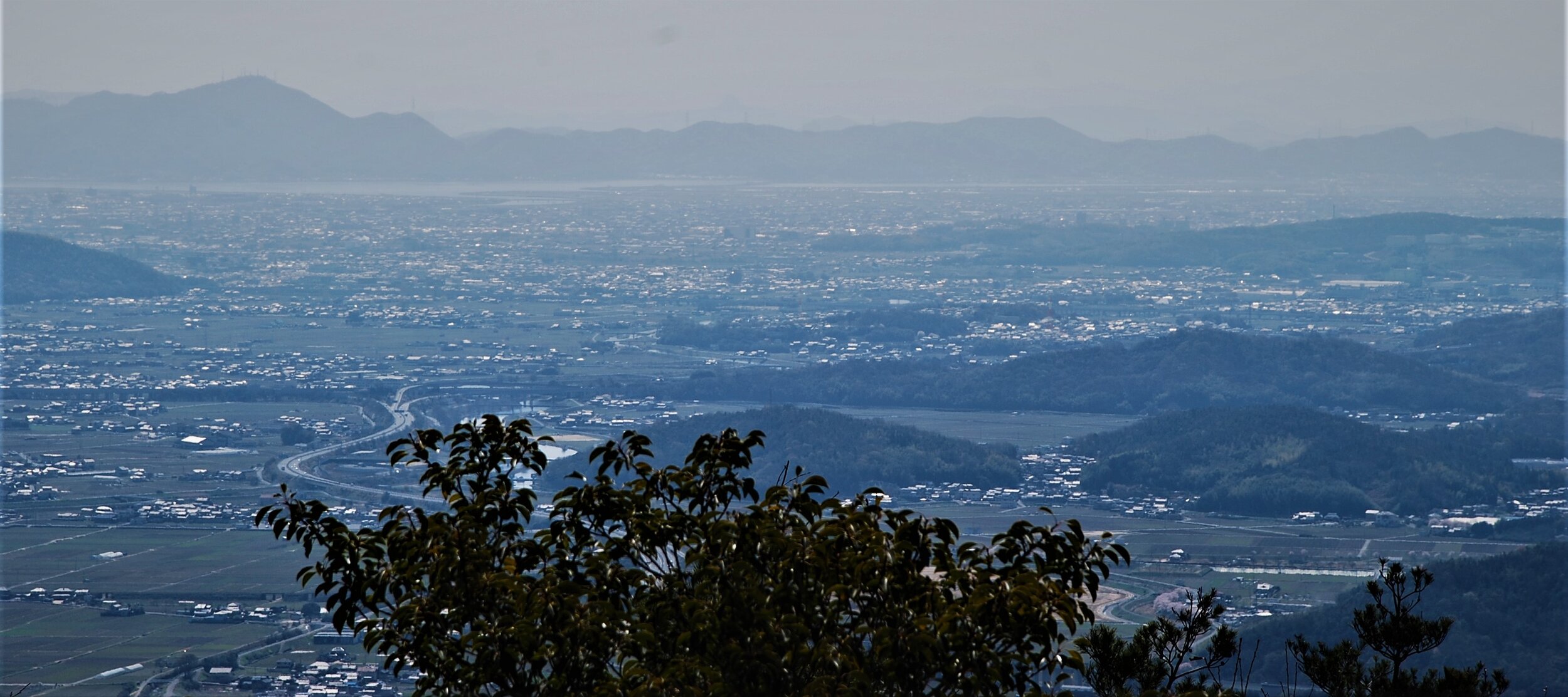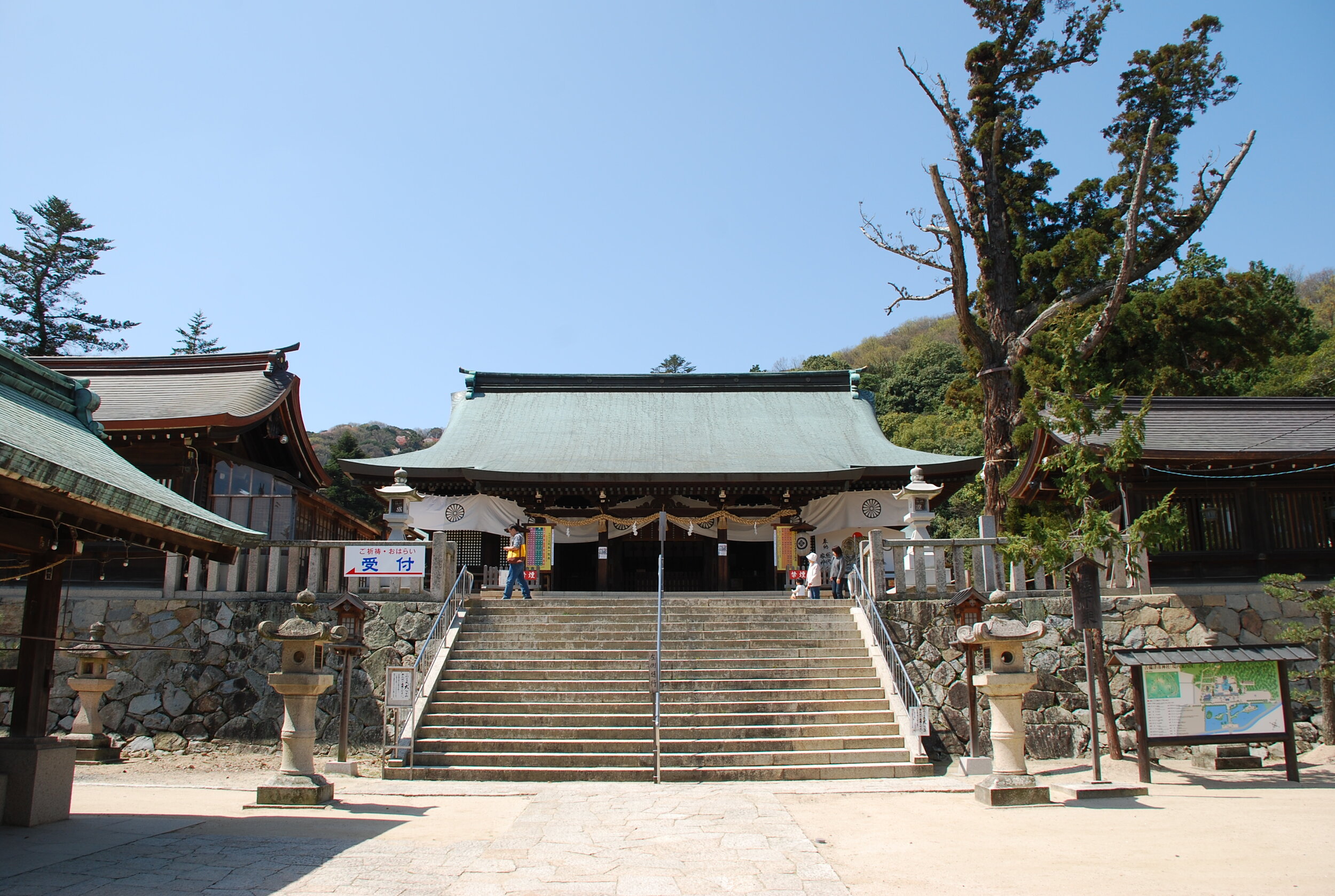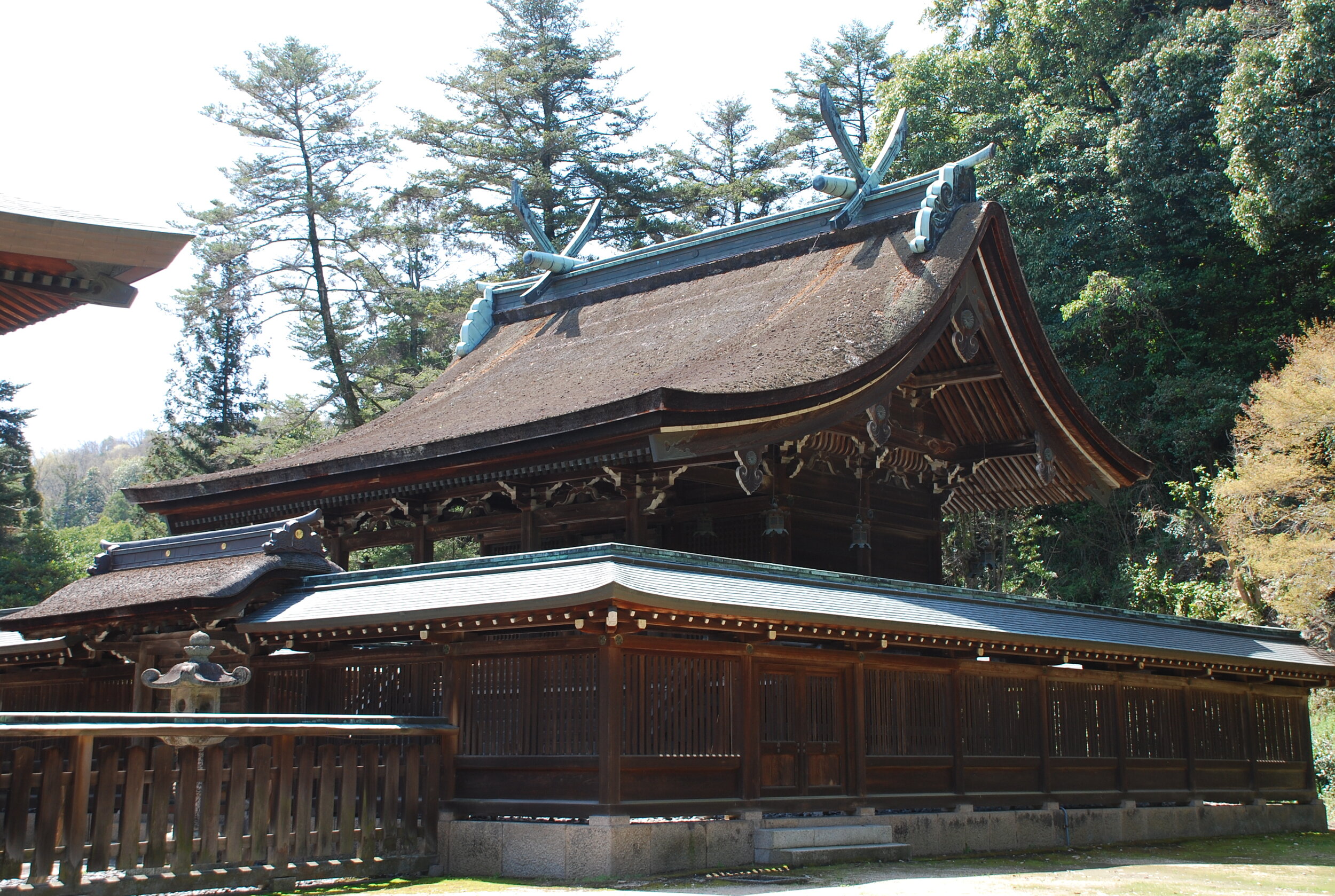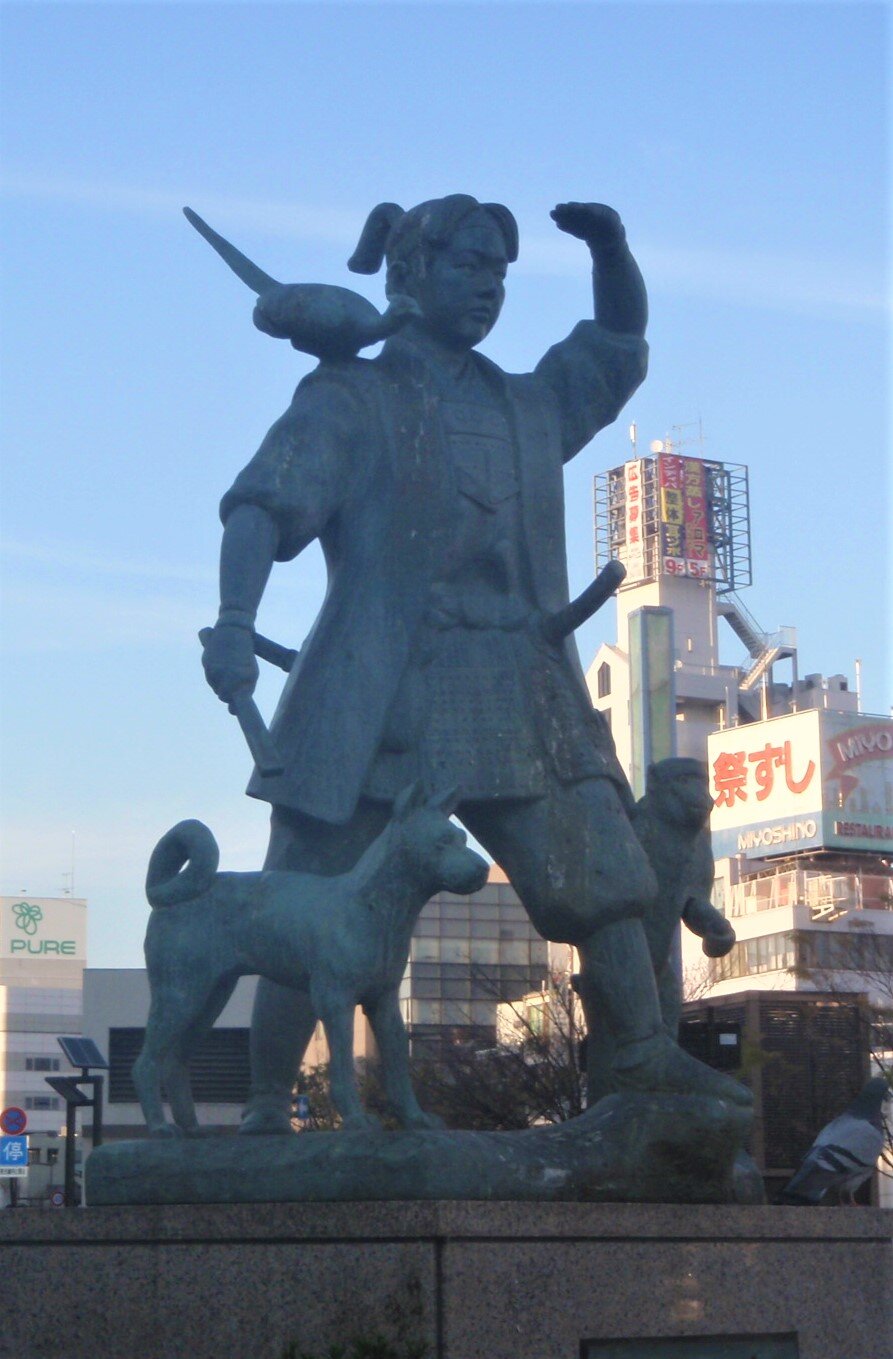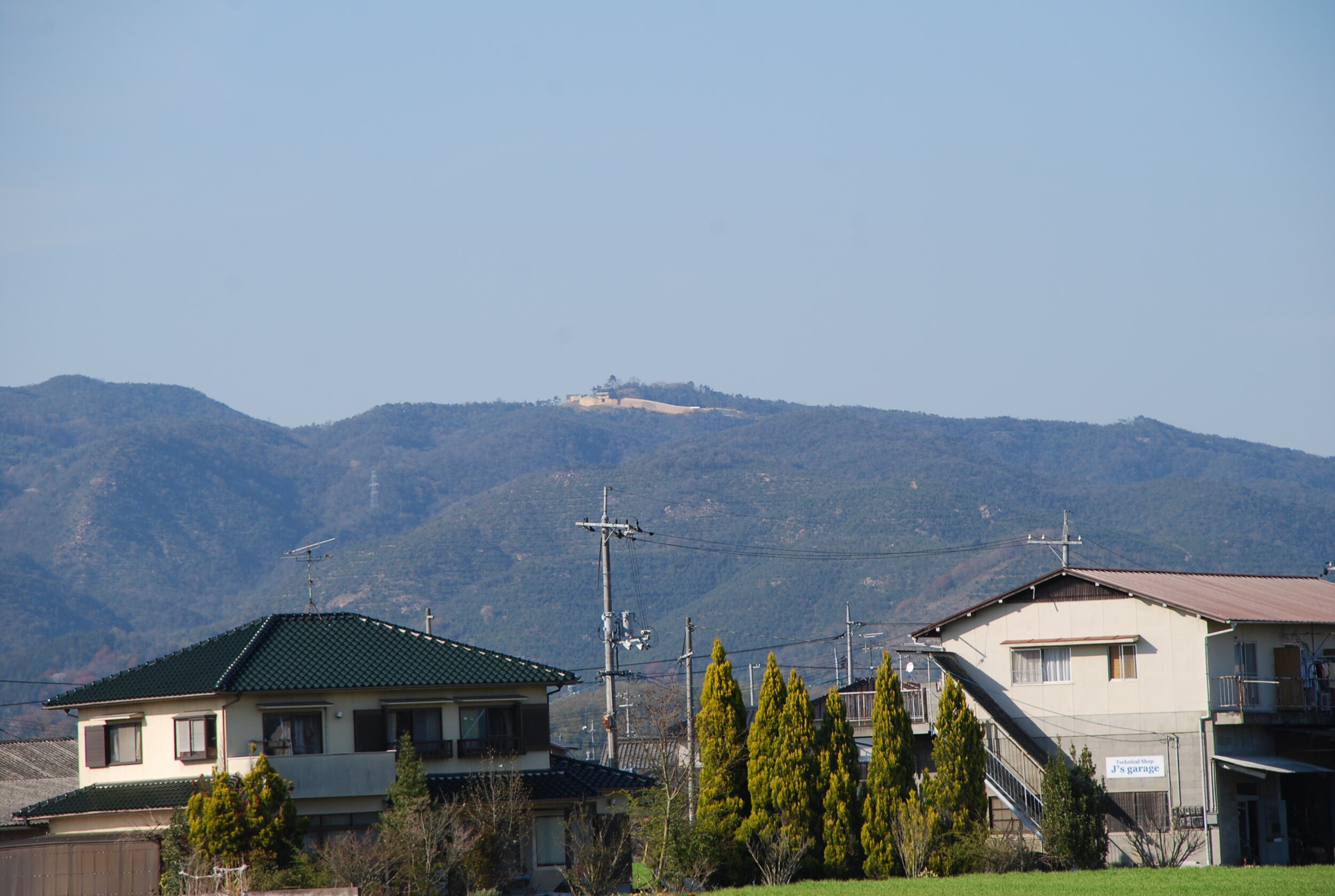Ame no Uzume, whom we didn’t get to in this episode, but another badass woman. Not only did her dancing bring back the sun, Amaterasu Ōkami, and give life to the world, but when Ninigi no Mikoto was heading down to earth and the way was blocked by the giant Saruta Hiko Ōkami. Who went forward to confront him? Why, Ame no Uzume, of course. Detail of Iwato Kagura no Kigen by Shunsai Toshimasa, 1887.
Previous Episodes
- October 2025
- September 2025
- August 2025
- July 2025
- June 2025
- May 2025
- April 2025
- March 2025
- February 2025
- January 2025
- December 2024
- November 2024
- October 2024
- September 2024
- August 2024
- July 2024
- June 2024
- May 2024
- April 2024
- March 2024
- February 2024
- January 2024
- December 2023
- November 2023
- October 2023
- September 2023
- August 2023
- July 2023
- June 2023
- May 2023
- April 2023
- March 2023
- February 2023
- January 2023
- December 2022
- November 2022
- October 2022
- September 2022
- August 2022
- July 2022
- June 2022
- May 2022
- April 2022
- March 2022
- February 2022
- January 2022
- December 2021
- November 2021
- October 2021
- September 2021
- August 2021
- July 2021
- June 2021
- May 2021
- April 2021
- March 2021
- February 2021
- January 2021
- December 2020
- November 2020
- October 2020
- September 2020
- August 2020
- July 2020
- June 2020
- May 2020
- April 2020
- March 2020
- February 2020
- January 2020
- December 2019
- November 2019
- October 2019
- September 2019
This episode we are going to take a pause and look at some of the truly exceptional women in the ancient stories. True, it may be questioned if some of these individuals existed at all, but there is a good argument to be made that their stories are, at the very least, rooted in some truth. Furthermore, we’ll take a look at some of the assumptions that we make about history in general.
Rather than recounting what we talked about previously, how about a few links and you can listen to their story again?
But really, there isn’t all that much to say: Women were always a part of history and in many cases were pretty badass. Deal with it.
-
Description text goes hereWelcome to Sengoku Daimyo’s Chronicles of Japan. My name is Joshua, and this is Episode 38: Two sovereigns and a minister.
Before we get started, thank you to Paul for donating to support the show. If you’d like to join them, you can drop us a few dollars over at ko-fi.com/sengokudaimyo—that’s K-O-Dash-F-I.com/sengokudaimyo—or find a link over at our website, sengokudaimyo.com/podcast.
So greetings, everyone, and welcome back! We are continuing on in this episode with the Chronicles’ stories about the Tarashi dynasty, this episode: Two sovereigns and a Grand Minister.
This episode we are going to move into the lives of the thirteenth and fourteenth sovereigns, Waka Tarashi Hiko and Tarashi Naka tsu Hiko, and we’ll take it right up to the story of Okinaga Tarashi Hiko, who probably should be considered the 15th sovereign but for reasons of patriarchy is often just considered a regent. We’ll also talk about the Grand Minister who seems to be conspicuously woven into all of their reigns.
First, though, let’s recap. We recently covered the life of Oho Tarashi Hiko, aka Keikou Tennou, the twelfth official sovereign, and the first to use “Tarashi” in his name—which is why I’m following some others and considering this next group of sovereigns, starting with Keikou, the Tarashi dynasty. The weird part about it is that even though I call it a “dynasty” we will very quickly see that it doesn’t exactly have the direct lineal descent lines that we would expect with such a term, something we touched on a few episodes back.
So as you might recall, Oho Tarashi Hiko had a son, Prince O’usu, aka Yamato Takeru, who is famous for subduing the Kumaso in the south and the Emishi in the north. Quite the warrior, when it comes down to it, and the Kojiki would have us focus almost exclusively on him. It seems quite clear that he was supposed to be the Crown Prince, which he may have been, if he didn’t die at a young age—only about 30 years old, according to the Chronicles. In an age where most of the sovereigns are noted for living for over a hundred years, that really was the cherry blossom of a life—burning bright, but quickly extinguished.
Oho Tarashi Hiko then made his other son, Waka Tarashi Hiko, his heir, and he became the lucky 13th sovereign, known to later generations as Seimu Tennou. Now, if I haven’t said it before, I should probably note that “Oho” generally means large, but can also mean “elder”, and “Waka” means younger. That could certainly apply to a father and son, but doesn’t necessarily have to, and could mean brothers or even some sort of male co-rulers, but for now we will assume the Chronicles are correct and that Oho Tarashi Hiko and Waka Tarashi Hiko were father and son.
Now, as I mentioned in a previous episode, Waka Tarashi Hiko isn’t a very noted sovereign. It isn’t that he was bad, even, he just didn’t do a whole lot of note, and we have a very sparse record of him and his accomplishments. Not bad, not good, just sort of, well—middling.
There were only two things that he was said to have donethat would really have some major effects later on. First, he designated his nephew, Tarashi Naka tsu Hiko as his heir—which is odd because they say he did that because he had no sons of his own. However, the Kojiki does record one son, Waka nuke no Miko, who seems to have been born to his wife, and one assumes the queen, Oto Takara no Iratsume, but other than the one reference we really have no other information on him, including why he wasn’t made his father’s heir..
But the other thing Waka Tarashi Hiko did was to promote his good friend and companion, Takechi Sukune, to the post of Oho-omi. Now “Omi”, as we mentioned before, meant minister, or something like that, and we see it in kabane, but we also see it in things like “Michi no Omi”—the Minister of the roads. “Oho-Omi”, with that long “O” sound—originally probably more like “Opo’omi”—would mean the Great Minister, and this seems to be the first time it is used in the historical record. That means that Takechi Sukune was being promoted to the number one spot in the government, outside the sovereign themselves. That’s pretty huge, if you ask me!
Now if you don’t recall Takechi Sukune, I don’t blame you. His name kept cropping up in Oho Tarashi Hiko’s reign, here and there, but unlike Yamato Takeru, who had an entire section devoted to him, reference to Takechi Sukune is a bit more disjointed.
His father was a loyal servant of Oho Tarashi Hiko, one whom we mentioned in passing: Ya Nushi Oshiho Dake Wo Goro no Mikoto, also known as Take Wi-Goro, so we’ll just go with that for now. When Oho Tarashi Hiko was about to embark for a tour of the province of Kii, south of Yamato, to sacrifice to all of the spirits in that land, a pre-travel divination was held, and it determined that the sovereign should not take this journey, as it was inauspicious for him to do so. Therefore, Take Wi-goro stepped up and offered to go in the sovereign’s stead to worship all of the kami.
This he did, and then he resided there in Kashihara in Abi, where he met a woman, Kage Hime, and she eventually gave birth to a son who would one day be known as Takechi Sukune. So he was already born with a lineage of service to the throne.
We next hear about Takechi Sukune in the 27th year of Oho Tarashi HIko—when he was somewhere in his 20s. He was sent by the sovereign to go and map out the north and east and to report back. He made it all the way to the place known as Hitakami before coming back, and he told the court all about the Emishi living in that region. Of course, shortly thereafter, Yamato Takeru is sent on more or less the same journey, and the Chronicles provide a lot more details, upstaging Takechi Sukune’s own accomplishments.
Later, Takechi Sukune is the one who hangs back with Waka Tarashi Hiko to make sure nothing happens while the rest of the court is busy feasting and having a grand old time. It seems a small thing, but when combined with everything else, we can see that Takechi Sukune was a devoted minister, and when Waka Tarashi HIko was dedicated as the Crown Prince, Takechi Sukune was given the title of Prime Minister, or Oho’omi.
Some time after that, when Waka Tarashi Hiko came to the throne, it is again stated that Takechi Sukune was raised to that same status of Oho’omi, and he remained so for his entire 60 year reign. When Waka Tarashi Hiko passed away, the Nihon Shoki claims he was 107 years old, so he must have been born some time around the 4th year of Oho Tarashi Hiko’s reign, which is when Yasaka Iribime is said to have become Oho Tarashi Hiko’s consort, at least. Takechi Sukune is actually said to have been born on the same day as Waka Tarashi HIko—hence the affection the two had, since they grew up together. That would mean that Takechi Sukune must have been 107 at the time of Waka Tarashi Hiko’s death, and he continued to serve in that position for much longer.
And this is not just Takechi Sukune whose lifespan seems to be even longer than the sovereigns he is serving. In the Kujiki we see similar things, with various members of the Mononobe serving multiple sovereigns, and then their children are popping up two or three sovereigns later. This actually makes a lot of sense—for most historical sovereigns, their reigns are often just at the tail end of their own lifespans, since they usually come to the position after the death of their own parent. If these reigns aren’t actually 60 years like the Chronicles claim, but more like 10~20 years, suddenly, we start to see how all of these advisors could realistically have had court careers that lasted through several reigns.
And speaking of the Mononobe family, they seem to have made out fairly well under Waka Tarashi Hiko, who is mentioned as granting title to or being served by at least 8 of the Mononobe members listed in the Tenson Hongi in Kujiki. By contrast, there are 6 Mononobe mentioned in connection to his predecessor, Oho Tarashi Hiko, and none that are listed in connection with his successor, Tarashi Nakatsu Hiko—though just why that may be the case will become apparent in a bit. There is one who is mentioned in connection with the reign of Okinaga Tarashi Hime, aka Jinguu Tenno, and at least four with her son and successor, Homuda Wake, aka Oujin, both of whom will play fairly important roles, later on. Given Waka Tarashi Hiko’s abbreviated mention in the actual lineage, it seems odd that so many of the Mononobe seem to be connected to him. Perhaps there was something here, and it was forgotten—perhaps even deliberately—since he wasn’t actually directly in line with the sovereigns of the 8th century, but was rather something of an offshoot. Or it is possible that his reign was actually quite short, and the author of the Kujiki found this a convenient spot to fluff out the lineage of the Mononobe themselvs.
Either way, it is definitely a mess, but let’s move on a bit and talk about the 14th sovereign, the one known to posterity as Chuuai Tennou.
Tarashi Nakatsu Hiko, or Chuuai Tennou was, according to the chronicles, born of the union of Yamato Takeru and Futaji Iribime, which means that he was Waka Tarashi Hiko’s nephew, not his son. Interestingly, both his name and his posthumous title contain the word “Naka” or “Chuu”, meaning “middle”. The explanation is that he was actually the middle of three brothers—predictably, the Chronicles don’t seem to count his younger sister. One might be surprised to find out that the various numbers given in the Chronicles for his family members don’t exactly add up. Or at least you might be surprised if you are just joining us - otherwise it is just par for the course. The weird thing is that these numbers aren’t even internally consistent.
The Kojiki gets around a lot of this timey-wimey, Jeremy Bearimy stuff by just not worrying about regnal dates, for the most part. It simply tells the story and it is up to the reader to determine what happened when. But the Nihon Shoki is obsessed with dates, even if they are ludicrous. And in this case it is bewildering and makes you wonder how they could have had this happen—though it could also be a simple arithmetic error.
You see, according to the Nihon Shoki, Tarashi Naka tsu Hiko was named the Crown Prince in the 48th year of Waka Tarashi Hiko’s reign, which wouldn’t seem odd until you see the line that says he was only 31 years old. Well, if he was 31 years old, then doesn’t that mean he would have had to have been born in the 17th year or so of Waka Tarashi Hiko’s reign? Yet his father, Yamato Takeru, supposedly died in the 43rd year of Oho Tarashi HIko’s reign, some 17 years before Waka Tarashi Hiko even took the throne. So that puts some 34 years between Tarashi Nakatsu Hiko and his father, Yamato Takeru.
And it does seem possible that we are catching, here, a simple error by the scribes. After all, if he were made Crown Prince in the 31st year of Waka Tarashi Hiko’s reign, and he were 48 at the time, then that would mean he was born the year that his father, Yamato Takeru, passed away. Now, instead of 34 years, we are at least in the ballpark—but even then, Yamato Takeru had been on campaign against the Emishi, and that started 3 years earlier. So when exactly he and his wife got together in all that time is more than a bit of a mystery. Not to mention, the final bit of the puzzle: Tarashi Naka tsu Hiko is only the middle of three brothers—if this were MBMBAM we might say that he is the Middlest Brother, Travis McElroy. So if his father died the year he was born, when was his younger brother born, let alone his younger sister?
So clearly once again there are some date issues with the text, things that you would think that anyone could possibly have seen and that the Chroniclers probably could have adjusted. But add it all to our centenarian of a Great Minister, and something fishy is going on here. Indeed, Takechi Sukune would go on to serve as the Great Minister for about that same amount of time, right up to the time of the 15th or 16th sovereign, serving the court in at least four different reigns.
Of course, there are many theories as to just what is going on, but no cold hard facts: It isn’t like any of the scribes made a note about just how preposterous these dates were. And, by the way, the fact that the dates *are* so messed up gives me some hope that there are at least some true nuggets of cultural memory embedded in the rest of the story. After all, if it was just made up out of whole cloth, why have some of these elements at all?
There is also something in all this that could easily be missed, and it isn’t consistent across all of our sources, but there is the idea that Futaji Hime—aka Futaichi Hime—was, in fact, the daughter of Ikume Iribiko. This is important because Futaji Hime was one of the wives of Yamato Takeru and the mother of Tarashi Naka tsu Hiko and his siblings. If that was the case, then might Tarashi Naka tsu Hiko’s matrilineal history be as important, or moreso, than his patrilineal? Remember, lineage from the mother often determined things like eligibility to the throne as much or even more than the fathers. After all, there were many children of various sovereigns, but they had to be born of the proper mother—the designated queen—and half-siblings of the same father but different mothers were not considered to be truly brother and sister to each other. It also makes him a descendant of both the Iribiko dynasty of Makimuku as well as the Tarashi dynasty. This detail isn’t consistent across the sources, though, so it also could have been a detail added later to further legitimize this side of the family.
Now, our earliest information on Tarashi Naka tsu Hiko’s reign comes largely from the Nihon Shoki. The first account is actually one of a strictly filial nature, emphasizing his connection to his father, Yamato Takeru: Tarashi Naka tsu Hiko decides to gather white birds to adorn the pond at his father’s, tomb mound. Now, as you may recall, Yamato Takeru’s soul is said to have flown up to the heavens in the form of a white bird, and so this would seem a fitting tribute—though don’t ask me how they were going to get the birds to stay there once they brought them down. Maybe a whole lot of birdseed and some glue?
Anyway, as birds were being brought from the Koshi region, the delegation camped out along the bank of the Uji river. There, they were stopped by Prince Gamami Wake of Ashigami, a younger brother of the sovereign, Tarashi Naka tsu Hiko, though by a different mother. I believe this may be the same as the prince elsewhere listed as Ashikagami, but there isn’t really a clear link either way, other than mention of his relation to Naka tsu Hiko. Anyway, Prince Gamami Wake asks why they are taking the birds, and when he hears it is because of an order by his elder brother-by-different-mother, the sovereign, Tarashi Naka tsu Hiko, for their father’s tomb, he scoffs. “These may be white birds, but they will be black birds, once I’ve roasted them.” And so saying, he confiscates the birds and has them cooked to eat.
Tarashi Naka tsu Hiko was none too pleased with this, and he sent troops to go and put his younger brother to death for disrespecting their father in such a manner.
This seems to have put people on notice—Tarashi Naka tsu Hiko may be the middle child, but he wasn’t taking the middle way. He wasn’t about to take disobedience from anyone, even members of his own family. Of course, this also strikes me as a very Confucian—and thus continental—story, and it is quite possible it was added in after the fact for some reason.
Now the second thing of note that he did was to move the court. You may recall that his grandfather, Oho Tarashi Hiko, had moved the court to Shiga Taka Anaho in the last three years of his reign, and it is assumed that Waka Tarashi Hiko had kept the court there, along Lake Biwa, away from its traditional home in the Makimuku district. But Tarashi Naka tsu Hiko moves it yet again, this time up to Kehi, in Tsunoga—aka Tsuruga. If that sounds familiar, it should be, but we’ll get to that later. This is really quite something, though—he’s literally moved the palace to the other side of Honshu, which seems pretty drastic, although it is noted that this is just a temporary palace. Still, to move the entire court up there seems to have been quite the move to make.
Anyway, after moving everyone up to Kehi, including his queen, Okinaga Tarashi Hime, the sovereign decides to take a tour of the quote-unquote “southern provinces”. Here, again, we see something interesting because for Tarashi Naka tsu Hiko, the “Southern Provinces” seems to have meant Kii—and possibly Yamato. For this journey, he takes a quote-unquote “small” number of courtiers—just three high officials, known as “daibu”, and several hundred officers. I don’t know about you, but that hardly feels like it is simply a “small” retinue, but it is what it is. The daibu aren’t actually listed by name, and so all of this may be an exaggeration.
Now, while he was down in Kii, staying at yet another palace, this one at Tokorotsu, word reached the sovereign that, just as in his father’s time, the Kumaso were in rebellion again, and he decided to go, much like his father, and put a stop to it. Without a thought, he put his men on boats and sailed west through the Seto Inland Sea, and he sent word to his wife, Okinaga Tarashi Hime, to come join him. She—and, one presumes, the rest of the court—took the northern route from Tsuruga Bay across the Japan Sea coast of Western Japan, eventually coming around through the straits of Shimonoseki. As they were doing that, the sovereign had already reached his staging ground of Anato—aka Nagato province, modern Yamaguchi prefecture. There, he anchored at Toyora and set up the Toyora Anato Palace, traditionally identified as being in the area of modern Shimonoseki city.
Of course, it was easy enough for him to slip over through the Seto Inland Sea, but his wife, Okinaga Tarashi Hime, had a bit farther to travel. And on the journey she had a few notable encounters. The first was at a place called Nuta, where they decided to have a meal aboard the ship, rather than stopping to eat on land. This seems to be identified with the area off of Mikata district, in modern Fukui Prefecture, just around Tsuruga Bay—so quite early in the journey.
Now, this idea of cooking and eating on board may not seem like much to us. After all, cruise ships are known for their all-you-can-eat buffets. But remember that the images we have of these early Japanese vessels are something more akin to large canoes than the broad-based ships of later periods, and I’m guessing it is unlikely that there was a lot of room on board for cooking and other such things, so I suspect that this means she wanted to keep them moving. On the other hand, it could also mean that she wanted to obtain food while still on the sea—in other words, take some time to throw out the nets and see what could be brought up that might be edible.
Either way, the story says that there were tai—or sea bream—schooling around the boat. Tai are a very popular fish in Japanese cuisine, even today, and its red scales can be quite striking. Apparently Okinaga Tarashi Hime had an idea and she poured out sake into the ocean around the ship. According to the legend, the fish got so drunk on the sake that they bobbed up to the surface and the sailors could just pick them up, providing the crew a feast. It is said that the fish of that place would regularly float belly up in the 6th month of the year in honor of that event.
Now, I don’t know if there is an actual event that would cause fish to float belly up during a particular time of the year—and if there was, I don’t know if I would trust those fish to be any good for eating. Typically, floating upside down indicates a problem with a fish’s swim bladder, and probably indicates some kind of illness or problem. But anyway, there you have the story.
In fact, I’d just like to state: Please don’t try to get fish drunk. Yes, they can get drunk, but too much is poisonous. Which, of course, could definitely explain them floating upside down. In fact, you can find suggestions on the Internet of using alcohol to help settle a large fish. Basically, the idea is that as fish swim through the alcohol, it is very quickly absorbed through the gills. This also means that it can hit them much harder than humans, going straight to the bloodstream, which is poisonous. Not a problem if you are just going to eat them, but I can stress enough that I am not condoing anyone going out and trying to get fish drunk.
More interesting, to me, is the praise that is given for the fish, because the sailors claim that the fish were “given to us by our wise sovereign.” Remember, this is Okinaga Tarashi Hime, not her husband, Tarashi Naka tsu Hiko. Why would she be considered a wise sovereign? Just something to think about, for now.
Later, they pull into Toyora harbor, alongside her husband’s boats, and when she arrives, Okinaga Tarashi Hime immediately finds an oyster with a nyoi pearl. Now this is clearly an anachronistic term, and probably an anachronistic story. You see, a nyoi pearl refers to the “ever bright and luminous pearl” on a nyoi scepter seen in the hands of particular Buddhist idols – in other words, it is specifically a Buddhist term, and Buddhism wouldn’t show up in Japan for a good while, yet, but it would have been a clear indicator for the Chroniclers and their audience.
Both of these events seem to be foreshadowing Okinaga Tarashi Hime’s larger role in the future.
Once at the Toyora Anato Palace, then, what would you think that Tarashi Naka tsu Hiko and Okinaga Tarashi Hime would do? Would they set up a war council and prosecute the war from there, sending down soldiers to pacify the Kumaso? Apparently not. No, instead, despite all the hurry that he was in to get here, Tarashi Naka tsu Hiko decides that he’s going to just sit there and enjoy the pleasures of Anato for the next five years. Once again, I feel we are seeing some of the limitations in our timeline coming into play, here. But whatever, I guess they just let the country run itself for five years while they worked out of the westernmost tip of Honshu.
Eventually, they decided they were ready, and they headed down to Tsukushi—aka northern Kyushu. In preparing to do so, they were met by the chieftain, or Agatanushi, of a place called Oka. Oka was actually mentioned in the story of Iware Biko as one of the places he passed through on his way to conquer Yamato, but it is unclear just where it was—possibly in northern Kyushu, on the northwest side of the island. There is some thought that it is actually in the are of modern Onga district, at the mouth of the Onga river, in modern Fukuoka prefecture
Anyway, the name of the Agatanushi of Oka was straight out of a made-for-tv SyFy monster movie: Kumawani. For those who don’t know, that effectively means “Bear Shark”. Well, okay, it means “Bear-Sea Monster”, but come on, you can’t tell me that the title “Bear-Shark versus Sharktopus” wouldn’t fit right in with a bunch of other similar titles.
So, Chief Bear-Shark, aka Kumawani, had heard of Tarashi Naka tsu Hiko’s plans, and he decided to go and offer his services. So he had plucked a nice sakaki tree, with some 500 branches, and adorned it with royal symbols, and headed out to meet the royal boats at the bay of Saba. This seems a little out of the way, as Saba is in Suwo Province, which is east of where the sovereign was supposedly encamped if he was actually staying at Toyora Anato, so technically this seems to be back-tracking—but there are enough odd things going on here, I think we can add one more to the questions pile.
So there he was, Chief Bear-Shark, with a white-copper mirror, a 10-span sword, and yasaka jewels hanging from the lowest branches of the sakaki tree, set up on the bow of his ship. It’s like a Yule tree of soverignly symbolism. This was apparently the standard greeting from Kyushu chieftains, as Oho Tarashi Hiko’s men had been greeted in a similar fashion, and then, later, Itote, the ancestor of the chieftains—or perhaps just chieftain himself—of Ito, decorates his boat in a very similar fashion when he comes to greet the sovereign. I do wonder if this is because they were greeting the sovereign of Yamato, or if this was those particular chieftains demonstrating their own wealth and power through prestige items.
And then, Kumawani flexed hard: he basically offered the entirety of northwest Kyushu, from Anato—aka the Shimonoseki straits—all the way down to Nagoya, near Karatsu. I’m not sure if he actually had any authority to offer all of that, but it is quite the claim for him to be making, especially, since we later see someone who may have just been the chieftain of Ito, around modern Itoshima, also greet the sovereign and his fleet. Still, it isn’t like the Yamato forces were going to decline, and they decided that maybe they would head out with him, so they let him act as a pilot and he led them around to Oka Bay.
Now pulling in to Oka Bay was apparently a bit treacherous, and it sounds like you had to properly time your approach with the tides. This would make sense if this bay sat at the mouth of a river, and it may indeed have been difficult to make your way against the flow if you went at the wrong time, depending on what the conditions were like back then. Then again, it could just be that the water was too low for the draw of the boats. Of course, they don’t make mention of tides, but they do say that as they came around Cape Yamaga, the sovereigns boat came to a stop. Of course, they blamed it on a pair of kami—Oho kura Nushi and Tsubura Hime. So Tarashi Naka tsu Hiko appointed his steersman as a priest, or Hafuri, and they conducted prayers to appease the kami, which worked because they were able to then make their way into the harbor. Or, alternatively, the rituals kept them busy until the tide changed direction.
However, it seems that once again, Tarashi Nakatsu Hiko had traveled separately from his wife, Okinaga Tarashi Hime, who was a little bit behind him. And so as soon as Chief Bear-Shark finished piloting the royal canoe into the bay, he had to go back out and meet up with Okinaga Tarashi Hime. Unfortunately, the tide had changed again, it seems, because her boat wasn’t able to make any headway, either, except that here they explicitly mention that the tide was low, and that is why they couldn’t proceed forward.
Now Okinaga Tarashi Hime was not exactly a patient woman—when she saw something she wanted, she seems to have gone for it. And it wasn’t like there was TV, let alone Internet—she couldn’t just sit there and play the latest game on her iPhone while waiting for the tide to change. So Kumawani came up with a diversion. He set up two artificial pools, somehow, and he filled one with fish and one with various birds. How he accomplished this we are not told—maybe more of that birdseed and glue—but it seems to have held the Queen’s attention for long enough that the tides changed and they were able to make headway again.
Now that Tarashi Naka tsu Hiko finally made it down to Tsukushi, he set up a new palace—I think this is palace number four if you are keeping track. This was the palace of Kashii, and tradition places it in the area of modern Fukuoka, between the areas identified as Oka and Ito, in the old country of Na. The Nihon Shoki notes that he was there around 8 months, gathering his forces, before hosting a war council to figure out just what he was doing to about the Kumaso.
This is about the point where the Kojiki picks things up, following all the genealogical info, and it starts by adding a little detail about Okinaga Tarashi Hime, who apparently was something of a shamaness. Specifically it says that she was regularly getting possessed and often summoning kami, which is rather important for the next bit. The Kojiki indicates that there was a purposeful summoning, and provides interesting details. It involved Tarashi Naka tsu Hiko playing the koto—a type of zither—and Okinaga Tarashi HIme acting as the medium. And then there was one other participant: Takechi Sukune—remember him?—who served as the Sanipa, a type of interpreter for the words of the kami.
In the ritual, Okinaga Tarashi Hime made contact with a kami who told them to put the campaign with the Kumaso on hold—after all, they would still be there, later, and, let’s face it, the land in southern Kyushu really wasn’t all that great, anyway. Instead, there was a land of gold and silver, called Silla, just across the sea, and it could all be theirs if they just worshiped the kami who were coming to them, including offering up their ships and various rice paddies.
Well, Tarashi Naka tsu Hiko was more than a little skeptical at all of this. He had climbed the nearby mountains at some point and when he looked out from there, he couldn’t see any evidence of another land—only the expanse of the ocean. He decided to stick with the land that he knew, thank you very much.
That was not exactly the answer that the kami wanted, and they literally told him that he could take his attitude and go you-know-where. Specifically they said that he could go “straight in one direction”, which was their way of saying that he could, well, go-off-and-die.
Takechi Sukune heard this, urged Tarashi Nakatsu Hiko to call out and to call upon the kami and ask for forgiveness, but it was no use. It was growing dark, and the attendants began lighting the torches, but as they did so, the koto went silent, and when the lights finally came up, Tarashi Naka tsu Hiko was dead.
Or, that’s one way it goes. A less dramatic version says that he continued his campaign against the Kumaso, but was struck by an enemy arrow and eventually expired from his wounds.
Either way, his death was seen as a consequence of ignoring the words of the kami. Okinaga Tarashi Hime worked quickly with Takechi Sukune, and they contacted the kami again, and this time they promised to follow their instructions. The kami, appeased, said that it would be the child currently in the Queen’s womb who would rule over the land that they would conquer.
And so it looks like Okinaga Tarashi Hime had some planning to do, but before that, they had to do something about the sovereign’s death. Much like the Takeda would do centuries later, they decided it would be best to keep the royal death hidden for as long as possible, to prevent any kind of shenanigans, especially if they were going to be out of the country for a time. She colluded with Takechi Sukune and the other high officers to protect their secret. They also took Tarashi Naka tsu Hiko’s body back to the Toyora Anato Palace and had it interred in a temporary burial. This ceremony was done quietly, without the normal pomp and circumstance that would be expected upon a royal death. They specifically mention keeping the torches unlit so that people wouldn’t see what was going on.
And with that, they began preparations for the trip to the Korean peninsula. They enshrined the spirits of the kami who had delivered the messages at the top of the royal ship, and put wood ash in a gourd and made flat plates out of chopsticks. All of this was thrown into the ocean to ensure a safe voyage.
Thus ended the reign of Tarashi Naka tsu Hiko, and the regency—or reign—of Okinaga Tarashi Hime had begun.
So there is a lot we could dig into in this. You can see the role, I hope, that Takechi Sukune is playing, throughout, even if the focus isn’t on him, directly. Then there are many parts to this story that feel like they are telling different versions of the same story and trying to mash them all up together. A lot of people don’t believe that anything like this happened at all, and we’ll analyze some of that as we really dig into the campaign on the Korean peninsula. There are a few quick things that I’d like to address, however.
First, is the timing. In our modified chronology, this is all some time in the mid-to-latter part of the 4th century, but the dates in the Nihon Shoki would put us just at the tail end of the 2nd century. That means we are about to crossover into the stories found in the Wei Chronicles, and that could already be causing some confusion. We know that the Chroniclers had access to the continental histories—they more or less quote them line for line at several points. So it is quite possible that some of the action and story that we are seeing has been organized to try to fit what is in those continental histories. After all, the whole thing with Oho Tarashi Hiko and Yamato Takeru would fit in nicely with the idea that there was some chaos before Himiko took the throne, and of course they make mention that she was something of a shamaness. I can’t help but wonder if multiple stories have been conflated.
Then there is the totally unbelievable idea that Tarashi Naka tsu Hiko didn’t know about Silla. After all, it was only a few reigns back that they had visitors coming from the continent, and we know that they had contact with the peninsula well before this point—how else were continental goods getting to the archipelago? Sure, you can’t see it from Kyushu, but I think our sovereign here is a little old to be feigning object impermanence.
There is even the fact that they seem to start at Tsunoga, and the Kehi palace—the very place where one of the Korean princes is said to have landed. This whole thing is rather bizarre.
And speaking of bizarre, let me address one last thing that you may run across in all of this: the theory that Tarashi Naka tsu Hiko and Okinaga Tarashi HIme aren’t Japanese at all. That’s right. There are some that claim that what we are really seeing are stories from the Korean peninsula, and the Buyeo nobles of Baekje that would eventually come in and, according to this theory, take over in Yamato and eventually spread through the whole archipelago. This will be even more pronounced when we get to the next sovereign—that one currently in Okinaga Tarashi Hime’s womb—but I’m not sure that we want to give that theory too much credence without more evidence to back it up. For now we will continue to look at what we have in front of us, even if it seems to make almost no sense at all, sometimes.
So, until next time, thank you for all of your support. If you like what we are doing, tell your friends and feel free to rate us on iTunes, Spotify, or wherever you listen to podcasts. If you feel the need to do more, and want to help us keep this going, we have information about how you can donate through our KoFi site, kofi.com/sengokudaimyo, or find the link over at our main website, SengokuDaimyo.com/Podcast, where we will have some more discussion on topics from this episode. Questions or comments? Feel free to Tweet at us at @SengokuPodcast, or reach out to our Sengoku Daimyo Facebook page.
That’s all for now. Thank you again, and I’ll see you next episode on Sengoku Daimyo’s Chronicles of Japan.
References
Ō, Yasumaro, & Heldt, G. (2014). The Kojiki: An account of ancient matters. ISBN978-0-231-16389-7
KISHIMOTO, Naofumi (2013, May). Translated by Ryan, Joseph. Dual Kingship in the Kofun Period as Seen from the Keyhole Tombs. UrbanScope e-Journal of the Urban-Culture Research Center, OCU, Vol.4 (2013) 1-21. ISSN 2185-2889 http://urbanscope.lit.osaka-cu.ac.jp/journal/vol.004.html
Bentley, John. (2006). The Authenticity of Sendai Kuji Hongi: a New Examination of Texts, with a Translation and Commentary. ISBN-90-04-152253
Piggot, J. R. (1999). Chieftain Pairs and Corulers: Female Sovereignty in Early Japan. Women and Class in Japanese History. Edited by Hitomi Tonomura, Anne Walthall, and Wakita Haruko. Center for Japanese Studies, The University of Michigan. ISBN 1-929280-35-1.
Aoki, Michiko Yamaguchi (1997). Records of Wind and Earth: A Translation of Fudoki with Introduction and Commentaries. As published at https://jhti.berkeley.edu
Chamberlain, B. H. (1981). The Kojiki: Records of ancient matters. Rutland, Vt: C.E. Tuttle Co. ISBN4-8053-0794-3
Aston, W. G. (1972). Nihongi, chronicles of Japan from the earliest times to A.D. 697. London: Allen & Unwin. ISBN0-80480984-4
Philippi, D. L. (1968). Kojiki. Princeton, N.J.: Princeton University Press. ISBN4-13-087004-1




